Why Your Retail Business Needs ERP Software to Stay Competitive
Meet Sarah, who runs a lively little retail shop in the city. It’s the kind of store where customers can find everything from fashionable outfits to one-of-a-kind accessories. Business was booming, but so were the challenges that came with it.
Sarah spent her days drowning in inventory mess-ups, mismatched orders, and endless spreadsheets that never quite added up. On top of that, her customers were asking for faster service and more personalized recommendations. No matter how hard she worked, it felt impossible to stay on top of it all—until she discovered a customizable ERP software for retail stores. Here’s how it transformed her shop.
HOW ERP SOFTWARE HELPS RETAIL BUSINESS
1- Tackling Inventory Chaos
Keeping track of inventory was one of Sarah’s biggest struggles. Too much stock meant wasted money and storage space while running out of customer favorites was bad for business. That’s where ERP software like FINAC stepped in.
The system gave Sarah real-time inventory updates, so she always knew what was running low or selling fast. Automated alerts reminded her to reorder popular items before they ran out. Even better, the ERP predicted demand based on past sales trends, helping her prepare for busy seasons without overstocking. Suddenly, her inventory was a well-oiled machine.
2- A Better Experience for Customers
Happy customers are the heart of any business. Sarah knew this but wasn’t sure how to meet their growing expectations. With the help of ERP software, she gained insights into their shopping habits and preferences.
Now, Sarah could offer personalized discounts, suggest items they’d love, and send out targeted promotions at just the right time. Her customers felt seen and valued, and her sales soared. It wasn’t just about the transactions anymore—it was about building lasting relationships.
3- Running Operations Smoothly
Retail life is chaotic. Sarah was used to juggling tasks across different tools, from inventory systems to payroll spreadsheets. It was exhausting—and prone to mistakes. With her ERP solution, all her operations came together in one place.
Whether it was sales, HR, accounting, or inventory, Sarah managed everything from a single dashboard. No more flipping between programs or fixing manual errors. Her team could focus on serving customers instead of being bogged down by admin work.
4- Smarter Decisions with Real Data
Sarah always wanted to make better business decisions but didn’t have the right data to back them up. The ERP system changed that. It gave her access to real-time reports showing her top-selling products, underperforming locations, and high-cost suppliers.
Armed with these insights, she made adjustments that boosted profitability. She shifted her marketing efforts to promote her most popular items and renegotiated deals with expensive suppliers. Every decision was informed and effective.
5- Staying Ahead of the Game
The retail world moved fast, and Sarah’s business needed to keep up. Whether it was adding an e-commerce store, managing multiple locations, or staying compliant with tax regulations, her ERP solution helped her stay one step ahead.
With everything running smoothly, Sarah didn’t just catch up—she set the pace. Her business wasn’t just surviving; it was thriving.
The Takeaway
Retail doesn’t have to be a daily grind of inefficiency and frustration. With a smart ERP solution like FINAC Cloud ERP, you can turn chaos into order, keep customers happy, and grow your business effortlessly. Take the leap and let technology transform the way you work.







Recent Comments